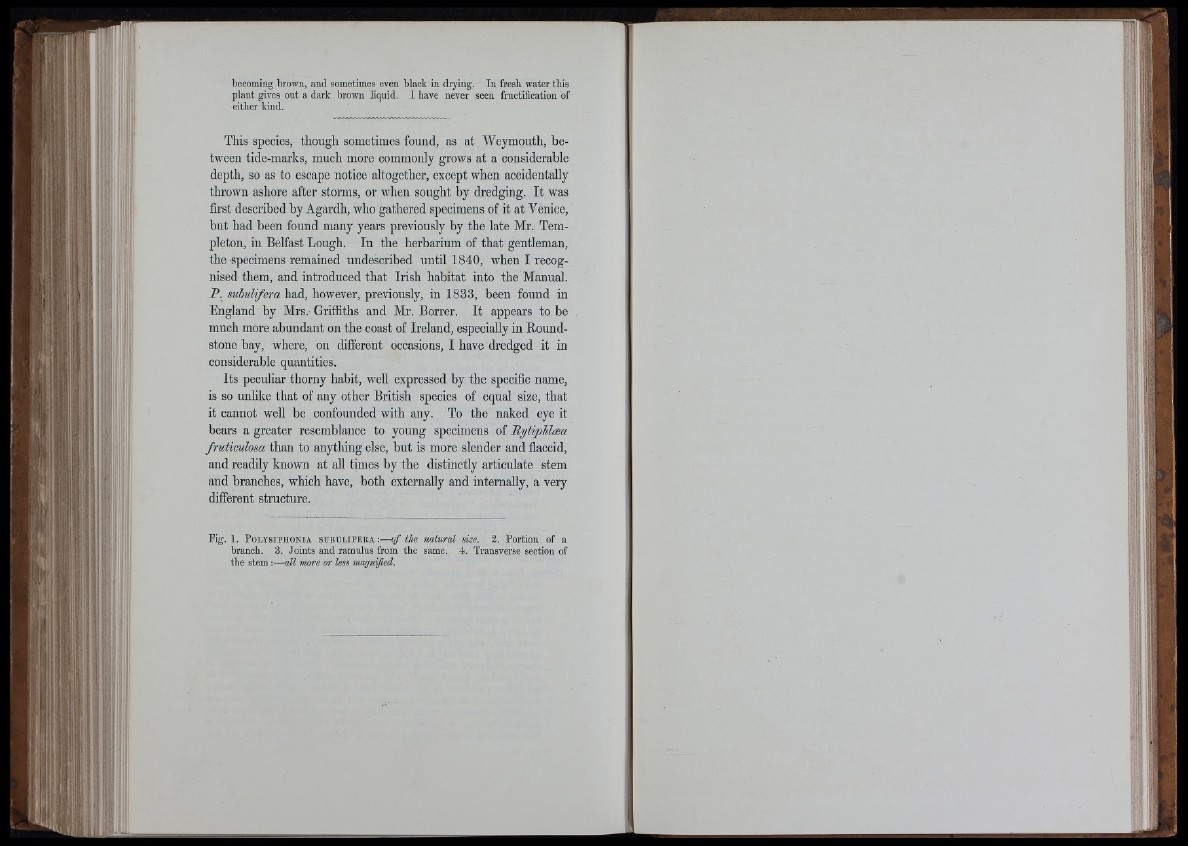
becoming brown, and sometimes even black in drying. In fresh water this
plant gives out a dark brown liquid, I have never seen fructification of
either kind.
This species, though sometimes found, as at Weymouth, between
tide-maxks, much more commonly grows at a considerable
depth, so as to escape notice altogether, except when accidentally
thrown ashore after storms, or when sought by dredging. It was
first described by Agardh, who gathered specimens of it at Venice,
but had been found many years previously by the late Mr. Templeton,
in Belfast Lough. In tbe herbarium of that gentleman,
the specimens remained undescribed until 1840, when I recognised
them, and introduced that Irish habitat into the Manual.
P. suhulifera had, however, previously, in 1833, been found in
England by Mrs. Griffiths and Mr. Borrer. It appears to be
much more abundant on the coast of Ireland, especially in Roundstone
bay, where, on different occasions, I have dredged it in
considerable quantities.
Its peculiar thorny habit, well expressed by tbe specific name,
is so unlike that of any other British species of equal size, that
it cannot well be confounded witb any. To the naked eye it
bears a greater resemblance to young specimens of PytipUaa
fruticulosa than to anything else, but is more slender and fiaccid,
and readily known at all times by the distinctly articulate stem
and branches, which have, both externally and internally, a very
different structure.
Fig. 1. P olysiphonia su bu l ipek a :— of the natural size. 2. Portion of a
branch. 3. Joints and ramulus from the same. 4. Transverse section of
the stem:— all more or k
I